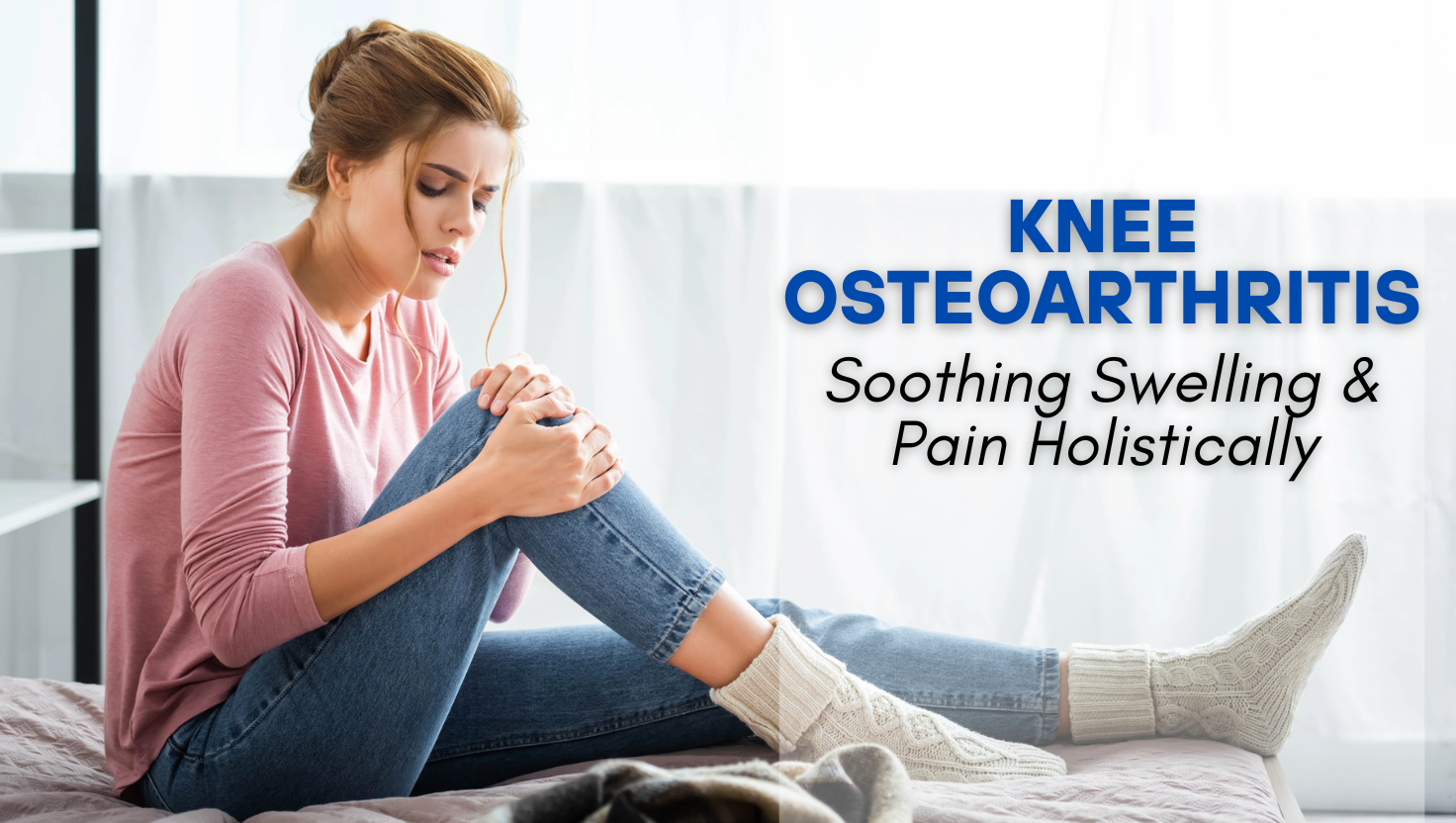Why Knee Osteoarthritis Hits Women Harder
Imagine standing up after a long day and feeling that familiar ache in your knees. For millions of women, this isn’t just a passing discomfort—it’s a sign of knee osteoarthritis (OA), a degenerative condition that wears away joint cartilage over time.
But why women?
- Hormonal Changes: After menopause, declining estrogen accelerates cartilage loss and increases inflammation.
- Biomechanical Factors: Women typically have wider hips, creating a sharper angle at the knees and extra strain during movement.
- Lifestyle Pressures: Weight fluctuations, pregnancy, and less time for self-care all add stress to knee joints.
The good news? You don’t have to give up your favorite activities. Let’s explore 4 holistic strategies that work with your body—not against it—to soothe pain and swelling naturally.
Step 1: Nourish Your Knees from the Inside Out
“Food is medicine, especially for your joints.”
What you put on your plate can be a game-changer for knee health. Inflammation is the enemy of healthy joints, and certain foods fight it at the source.
Why It Matters:
When inflammation lingers, it erodes cartilage and worsens stiffness. By eating anti-inflammatory foods, you calm joint irritation, support cartilage repair, and maintain mobility.
What to Eat:
- Omega-3 Powerhouses: Salmon, sardines, chia seeds, flaxseeds
- Antioxidant-Rich Vegetables: Spinach, kale, broccoli, bell peppers
- Healing Spices: Turmeric (with black pepper for better absorption) and ginger
- Bone Broth & Collagen: Supports cartilage strength and joint cushioning
What to Limit:
Sugary snacks, processed meats, refined carbs—these foods trigger inflammation and pain flare-ups.
Pro Tip: Pair turmeric with black pepper and healthy fat (like olive oil) for maximum anti-inflammatory benefits.
Step 2: Gentle Movement = Stronger Knees
“Motion is lotion for your joints.”
When your knees hurt, the instinct is to rest—but too much rest makes things worse. Movement boosts circulation, nourishes cartilage, and strengthens muscles that stabilize your knees.
Why It Matters:
Strong muscles reduce the load on your knees, making every step easier. Gentle, low-impact exercise is key.
What to Do:
- Low-Impact Cardio: Swimming, cycling, elliptical
- Yoga & Pilates: Improves flexibility and balance
- Strength Training: Focus on quadriceps, hamstrings, and glutes
- Daily Micro-Movements: Simple leg lifts and gentle squats (with good form)
Extra Tip: If your knees swell after activity, alternate heat (for stiffness) and cold packs (for inflammation).
Step 3: Acupressure for Quick Relief at Home
“Your body has built-in pain relief points—learn to use them.”
Acupressure taps into your body’s natural healing system by stimulating energy flow and increasing blood circulation around the knees. It’s simple, safe, and something you can do anywhere.
Why It Works:
Acupressure signals your nervous system to release endorphins, reduce inflammation, and ease pain—without pills.
Point to Try:
- ST36 (Zusanli) – Located 4 finger-widths below your kneecap and 1 finger-width outside your shinbone.
- How to Apply: Press firmly in a circular motion with your thumb for 2–3 minutes per leg.
- Benefits: Reduces knee discomfort, strengthens muscles, boosts energy, and improves digestion (bonus!).
Make it a ritual—morning and evening acupressure sessions can make a big difference in how your knees feel.
Step 4: Integrate Holistic Therapies for Lasting Relief
“Small steps add up—but professional care takes you further.”
Lifestyle changes are powerful, but sometimes you need a deeper reset. That’s where acupuncture, massage therapy, and herbal remedies come in.
Why These Work:
- Acupuncture: Reduces inflammation, stimulates cartilage repair, and restores energy flow. Clinical studies show it can match or outperform conventional pain treatments—without side effects.
- Massage Therapy: Improves circulation, relaxes tight muscles, and relieves tension around the knee joint.
- Herbal Support: Formulas with turmeric, boswellia, and white willow bark provide plant-based pain relief.
These therapies don’t just manage symptoms—they address the root cause and improve overall well-being.


